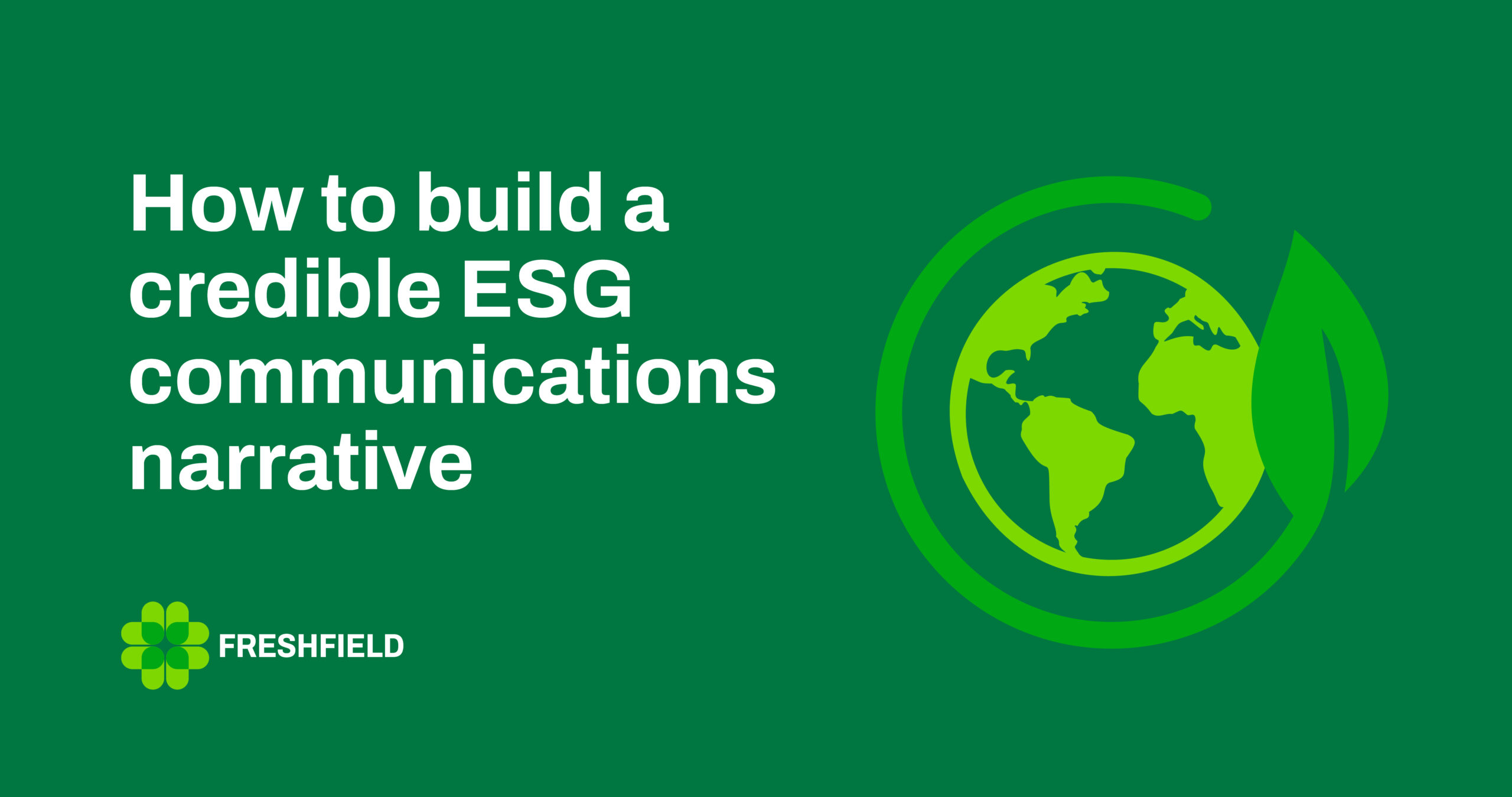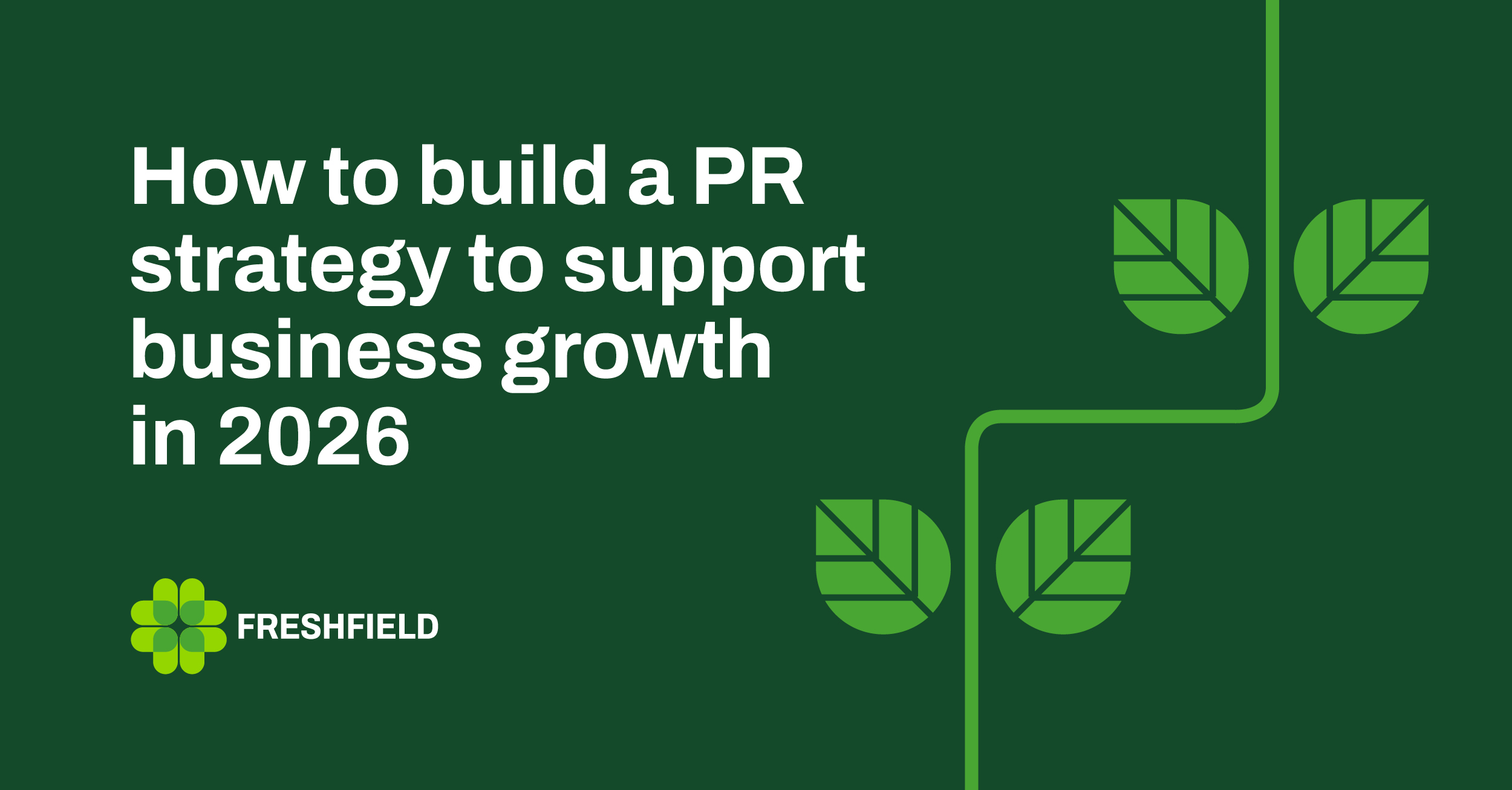Fresh eyes
How to build a credible ESG communications narrative

We’ve previously explored key strands of Environmental, Social and Governance (ESG) communications – from setting an ESG communication strategy to avoiding greenwashing and the importance of transparency.
In this feature we look at how business leaders and their teams can construct a credible ESG PR and communications narrative, one that resonates authentically, advances trust and stands the test of increasing scrutiny.
Start with your purpose
ESG shouldn’t be thought of as an add-on or promotional campaign, but a reflection of your organisation’s genuine values and purpose. The strongest ESG narratives begin with asking: why do we exist? Once that clarity is in place, ESG commitments feel embedded in your strategic backbone, not shoe-horned in.
This should feel simple and natural rather than being overly sophisticated. For example, a financial planning business might root its carbon-reduction pledge in its belief in long-term stability for its clients, communities and the planet. It’s a simple alignment that gives weight and authenticity to every subsequent initiative.
Be rigorous about what you say and how you measure it
Be wary about the pitfalls of vague commitments. A credible narrative requires precise, measurable goals. Moreover, these goals must link to robust data and external validation, such as third-party audits or internationally recognised ESG reporting frameworks. Presenting clear evidence of your progress ensures you don’t fall into the greenwashing trap or expose your organisation to stakeholder scepticism.
Build your story from the inside out
ESG transformation begins internally, through board buy-in and employee engagement. Before you tell the outside world about your ESG goals and achievements, these must be deeply rooted within your organisation.
This is where showing real stories helps. Examples might include interviewing employees who have contributed to ESG initiatives or highlighting how governance shifts have improved your organisation’s performance in a demonstrable way. These human stories make ESG tangible and credible.
Speak in your stakeholders’ language
Your ESG PR and communications narrative resonates most when it reflects what matters to your stakeholders – clients, investors, regulators, communities. We’ve spoken before about how stakeholder mapping and tailoring your message accordingly can guide communications. For example, you might emphasise operational resilience for your clients, long-term succession planning for investors, compliance and safety for regulators, jobs and local regeneration for communities. This targeted framing ensures your ESG story feels genuinely relevant and grounded.
Be in it for the long haul
Credibility is built over time. One of our earlier reflections on ESG communications stressed the importance of regular progress reporting that shows you mean what you say and that your commitments are not fleeting soundbites. Consider publishing annual ESG statements and reports, with progress and comparisons to previous years. Invite external commentary, whether peer feedback or independent reviews, to reinforce rigour and transparency.
Prepare for scrutiny, and welcome it
Lastly, building a credible narrative means anticipating criticism. ESG is an area of intense public interest and increasing regulatory attention. Build resilience through openness, explaining missed targets or setbacks. Organisations and leaders can deepen trust by demonstrating learning and accountability. In summary, a credible ESG narrative doesn’t spring from a one-off marketing campaign, but from deeply embedded purpose and long-term openness.
Freshfield has been advising businesses and their leaders for more than 25 years. If you’d like to find out more about creating a credible ESG PR and communications narrative, get in touch.





